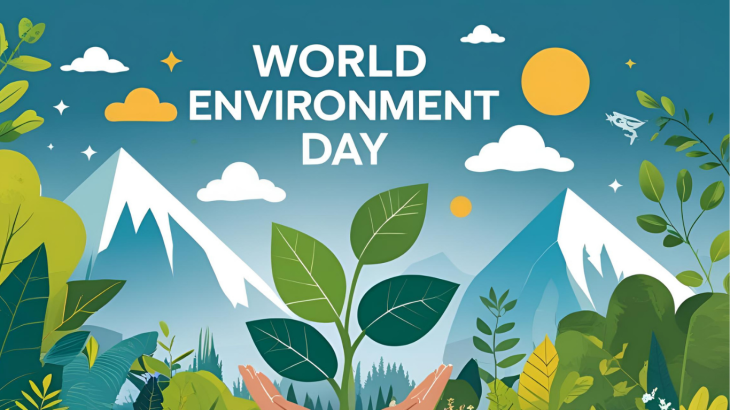As the world observes World Environment Day 2025, the focus has never been more urgent or more relevant. The theme, “Our Land. Our Future.”, underscores a critical truth: environmental degradation is not a distant possibility but a present and escalating reality.
Research suggests that nearly 40% of the Earth’s land is already degraded, directly affecting 3.2 billion people, particularly those dependent on agriculture and forest ecosystems. The UNCCD warns that if current trends persist, by 2050, an additional 16 million square kilometers of land, roughly the size of South America, could be degraded. This is not merely an ecological concern; it is a socio-economic crisis that threatens food security, displaces communities, and accelerates climate change.
The challenge, however, is not insurmountable. The Intergovernmental Panel on Climate Change (IPCC) identifies reforestation and afforestation as some of the most effective and scalable methods to mitigate the impacts of climate change. Forests absorb carbon dioxide, regulate water cycles, preserve biodiversity, and stabilize local climates.
At Grow-Trees.com, we align our efforts with this global science. Our platform facilitates tree planting at scale, focusing not only on environmental impact but also on community development and biodiversity preservation. From creating green corridors for endangered species to supporting tribal livelihoods through fruit-bearing and indigenous tree species, our initiatives are designed to serve both ecological and human needs.
For instance:
- In the Satpura and Kanha corridors of Madhya Pradesh, tree plantation efforts have contributed to the restoration of elephant and tiger movement paths, mitigating human-wildlife conflict.
- In rural Maharashtra and Odisha, plantations have empowered women and marginal farmers by providing them with sustainable income through forest-based produce.
- In urban and peri-urban locations, trees planted under our corporate greening programs contribute to air purification, carbon offsetting, and urban cooling.
Empirical evidence from satellite imaging and carbon sequestration models indicates that mature trees planted through verified community-based initiatives can capture 22–30 kg of CO₂ per year, depending on the species and geography. These figures are not hypothetical, they are the results of targeted, monitored, and data-backed interventions.
The path forward requires a dual commitment: one to science and the other to stewardship. Tree planting is not a ceremonial gesture; it is a measurable act of resilience against the backdrop of ecosystem collapse and climate uncertainty. Whether you are an individual, a corporate leader, or part of a policymaking institution, the opportunity to invest in land restoration through meaningful action is both accessible and essential.
This World Environment Day, we invite you to join this movement, not simply as a contributor, but as a participant in a global effort to restore ecological balance, safeguard future generations, and rebuild the relationship between people and the planet.
Learn how you can participate, collaborate, or gift trees at scale through verified planting projects across India. Visit www.grow-trees.com to explore how environmental restoration can also be a pathway to social and economic regeneration.
References:
- United Nations Convention to Combat Desertification (UNCCD) – Land Degradation Neutrality Facts:
https://www.unccd.int/resources/factsheets/land-degradation-neutrality-facts - Intergovernmental Panel on Climate Change (IPCC) – Special Report on Climate Change and Land (2019):
https://www.ipcc.ch/srccl/ - FAO & UNEP – The State of the World’s Forests 2020:
https://www.fao.org/documents/card/en/c/ca8642en - Nature Journal – The Global Tree Restoration Potential (Bastin et al., 2019):
https://www.nature.com/articles/s41586-019-1079-9 - World Resources Institute – The Restoration Diagnostic:
https://www.wri.org/research/restoration-diagnostic
